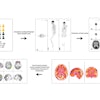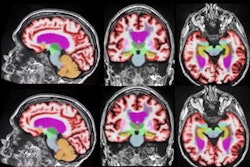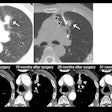Dear AuntMinnie Member,
It's a story almost too shocking to be true: Guidelines for performing x-rays in the first half of the 20th century routinely called for using higher radiation settings when imaging Black patients -- in some cases as much as 60% higher than for white individuals.
Called "race adjustment," these guidelines were based on the false belief that the dark skin and body habitus of Black patients required more powerful equipment settings in order for x-rays to penetrate. Our article on the story by Associate Editor Will Morton was the most-viewed article on AuntMinnie.com this past week.
While race adjustment is believed to have mostly ended after hearings in the U.S. Congress in 1968, the question remains about which of today's medical practices might exemplify the racial disparities still inherent in our healthcare system. We may find out in years to come.
There were several other important stories in our Digital X-Ray Community this week. A new market research report found strong demand in hospitals for fixed C-arms, while an orthopedic surgeon in California was sentenced to seven years in prison for performing unnecessary x-rays on patients.
Get these stories and more in our Digital X-Ray Community.
AI + photon-counting CT
Meanwhile, another top story from the week highlights the exciting potential when two of the hottest technologies in medical imaging are combined: artificial intelligence (AI) and photon-counting CT.
Researchers from the Mayo Clinic in Rochester, MN, used an AI algorithm to analyze photon-counting CT images of patients with bone disease caused by multiple myeloma. They found that the algorithm was able to sharply reduce noise in the images, enabling lower-dose protocols to be used.
Other recent articles in our CT Community include the following:
- CT can detect signs of lung problems in people with long COVID.
- AI analysis of CT images can predict lymph node metastasis in patients with pancreatic ductal adenocarcinoma.
- We may need a better way to evaluate the effectiveness of population-based cardiac screening programs, according to Dr. Frederic W. Grannis Jr.
Attitudes toward AI
Finally, Felix Beacher of market research firm Omdia examined why the rollout of AI for medical imaging appears to be taking longer than expected.



















